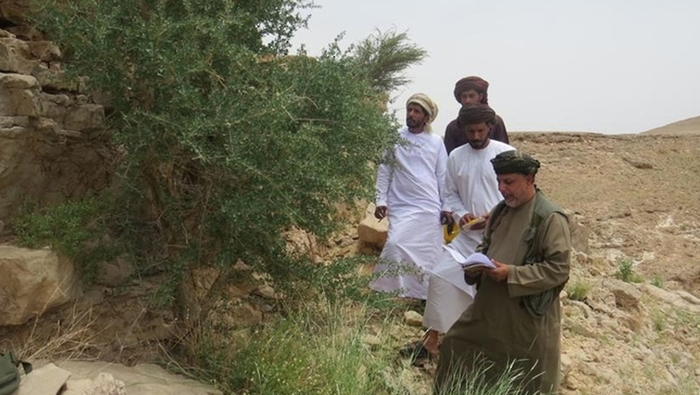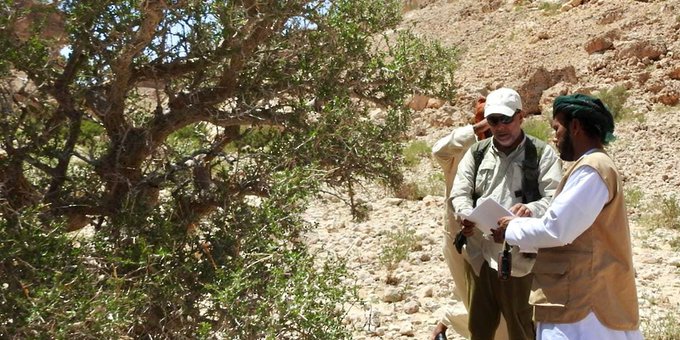

Muscat: The second phase of the “Survey of Arabian Myrrh Trees in the Sultanate of Oman” project has been completed. Overgrazing is among challenges facing myrrh trees.
The results of the second phase of the project, implemented by the Environment Authority and represented by the Environment Conservation Office in Salalah, Dhofar Governorate, showed that the most important challenges facing myrrh trees are:
- Overgrazing (62%),
- Insect activity (22%),
- Drought (10%),
- Unsustainable harvesting methods (6%).
The results of the second phase indicated that the confirmed spread area of the species is 92 square kilometres, while the potential natural spread range is a total area estimated at 3048 square kilometres.
Additionally, the study stated that the second phase expanded the scope of the surveys, and relied on about 15 scientific indicators to gauge the current status of the species. This is in addition to documenting and taking samples from a total of 59 trees representing the last gatherings of myrrh trees in the Sultanate, which were recorded and documented at a local database.
The results of the study showed that myrrh trees in the Sultanate are going through a very critical stage that leads to the importance of reconsidering their classification at the national level according to references of the evaluation of the International Union for Conservation of Nature (IUCN.2001), in terms of the presence of less than 250 trees in nature, with a decline of this species by more than 70 percent. The importance of protecting the species has been emphasised through the Environment Authority and other relevant competent authorities at the regional and international levels, with the need to continue implementing the remaining stages of the study until the end of this year, 2023. There is also a need to establish a garden of Arabian myrrh trees in areas of its spread in the Dhofar Governorate, to come within the objectives of the Authority’s plan for the year 2023.
The study was carried out using precise scientific methods and means. The indicators were divided into the following categories:
- Spatial indicators (date of inspection, name of the place, coordinates of the site, documentary image),
- Vital indicators for trees (height, branching, diameter of the main trunk, tree canopy, leaves, flowering, and fruits)
- Indicators of the degree of threat: (grazing, drought, insects, crop harvesting methods).
Focus in the study was placed on the documentation aspect of the species by collecting samples of gum and herbal samples. The study conducted an initial assessment of the age of a group of myrrh trees from the sample, which showed that the oldest tree is up to 40 years old, and the youngest is about 9 months old.
The study aims to identify the status of vital indicators of myrrh trees, and natural and human threats that cause a decline in their numbers in their areas of spread in the Dhofar Governorate. This is in addition to defining accurate and up-to-date scientific information and data about it, with the possibility of developing a classification of the threat level at local and global levels for the species.